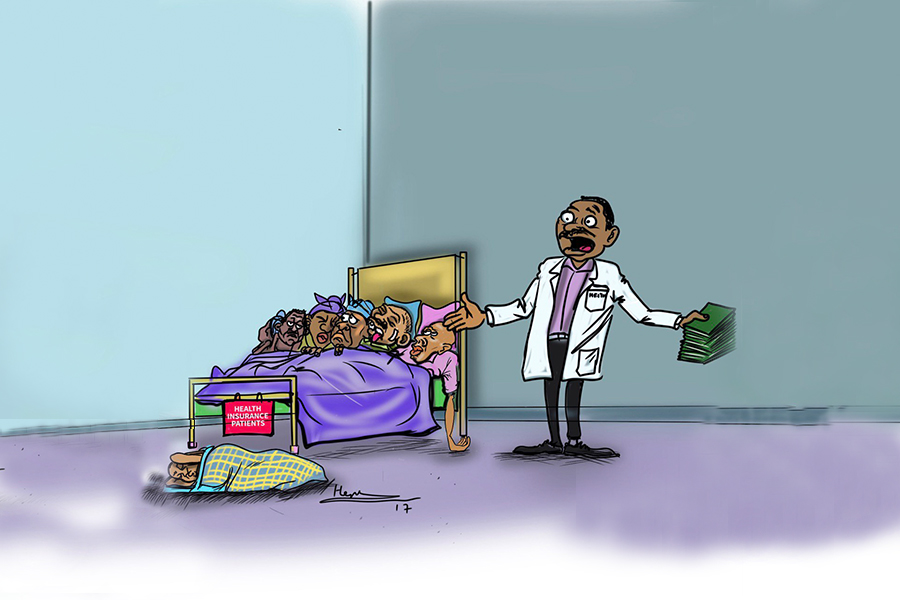
My Opinion | Dec 25,2021
In an age where pop-psychology has taken over our collective imagination, Hollywood is as much interested in studying antagonists as it is in fawning over one-dimensional hero figures. This is what the release of Maleficent: Mistress of Evil within just a week of Joker tells us. And while both of the movies are obviously derivative, the transition is a welcome detour into a new age of cinema that holds society responsible for individuals’ destructive behaviors.
Unfortunately, even if the ambition is appreciable, making nuanced character studies about infamous villains is not a walk in the park. It requires psychoanalytical knowledge, observation and the ability not to be bogged down by endless references to source material. This is a test the Joker passes but Mistress of Evil fails miserably.
The sequel picks up where Maleficent left off, after humans and fairies had reconciled and her goddaughter, Princess Aurora, better known as Sleeping Beauty, was crowned queen. That was supposed to be a happy-ever-after ending but studio executives thought they could make more money. Subsequently, Maleficent and Sleeping Beauty have to endure some more conflict we all know they will survive without a scratch.
After Princess Aurora agrees to give her hand in marriage to the prince of a neighboring kingdom, Maleficent is invited to the palace of the in-laws for a dinner. The idea for the invitation comes from Queen Ingrith (Michelle Pfeiffer), Sleeping Beauty’s soon to be mother-in-law, who is very much in the mold of the Game of Thrones fictional character Cersei Lannister or any one of the psychotic world leaders every country seems to be manufacturing in ever colorful mannerism.
Queen Ingrith wants to wipe out fairies, in a classic case of species cleansing, while Maleficent has to defeat her without at the same time alienating humans and worsening the tension between the two species. Maleficent faces a dilemma faced by many world leaders today. Fortunately for her, she exists in a fairy tale. We are not so lucky.
The influence of HBO’s Game of Thrones is very obvious in the movie. It fuses together political intrigue and fantasy to create a world where power becomes the ultimate arbiter. Granted, the movie is not remotely gritty, sexually suggestive or violent. And the ending is as happy-go-lucky as it gets. But the theme and symbolism, although pathetically explored, is grave and politically sensitive.
It is also hard to miss the Maleficent-Queen Ingrith face-off, highly reminiscent of the bloody rivalry between Daenerys Targaryen and Cersei. What is even more similar is how poorly both films resolve the conflict between the main characters.
Mistress of Evil may not deliver on the ambitious theme and concept it sets itself up for, but it does manage to get two things right. One is the superb special effects. The creativity here was only matched by the diverse and tasteful use of color and camera movements.
But the best thing about the movie was Pfeiffer, who seemed to have been waiting to play the role of an evil queen. In a better film, her performance would have garnered attention, but she is wasted in this movie. Her character is given a cliché backstory and is made out to be a cartoon antagonist. By the time the film is finished with Queen Ingrith, she is reduced to a one-dimensional character.
Pfeiffer does not let this bog her down. She performs funny and dramatic scenes with the same level of professionalism that a much better movie deserved. She proves in two hours why she would have been better served playing the role of Cersie in Game of Thrones than a villain in this mess of a movie.
PUBLISHED ON
Nov 02,2019 [ VOL
20 , NO
1018]

My Opinion | Dec 25,2021

Radar | Sep 10,2021

Radar | Jul 11,2021

Radar | Aug 07,2021

Editorial | Dec 11,2021

Advertorials | May 15,2023

Agenda | Apr 02,2022

Fortune News | Sep 30,2021

Radar | Jul 11,2021

Fortune News | Sep 01,2021

Photo Gallery | 156282 Views | May 06,2019

Photo Gallery | 146565 Views | Apr 26,2019

My Opinion | 135227 Views | Aug 14,2021

Photo Gallery | 135079 Views | Oct 06,2021

Sep 13 , 2025
At its launch in Nairobi two years ago, the Africa Climate Summit was billed as the f...

Sep 6 , 2025
The dawn of a new year is more than a simple turning of the calendar. It is a moment...

Aug 30 , 2025
For Germans, Otto von Bismarck is first remembered as the architect of a unified nati...

Aug 23 , 2025
Banks have a new obsession. After decades chasing deposits and, more recently, digita...

Sep 15 , 2025 . By AMANUEL BEKELE
The Grand Ethiopian Renaissance Dam (GERD), Africa's largest hydroelectric power proj...

Sep 13 , 2025
The initial budget in 2011 was 80 billion Br, but this figure swelled to a revised cost of 240 billion Br by 2024, a challenge that was exac...

Banks are facing growing pressure to make sustainability central to their operations as regulators and in...

Sep 15 , 2025 . By YITBAREK GETACHEW
The Addis Abeba City Cabinet has enacted a landmark reform to its long-contentious setback regulations, a...